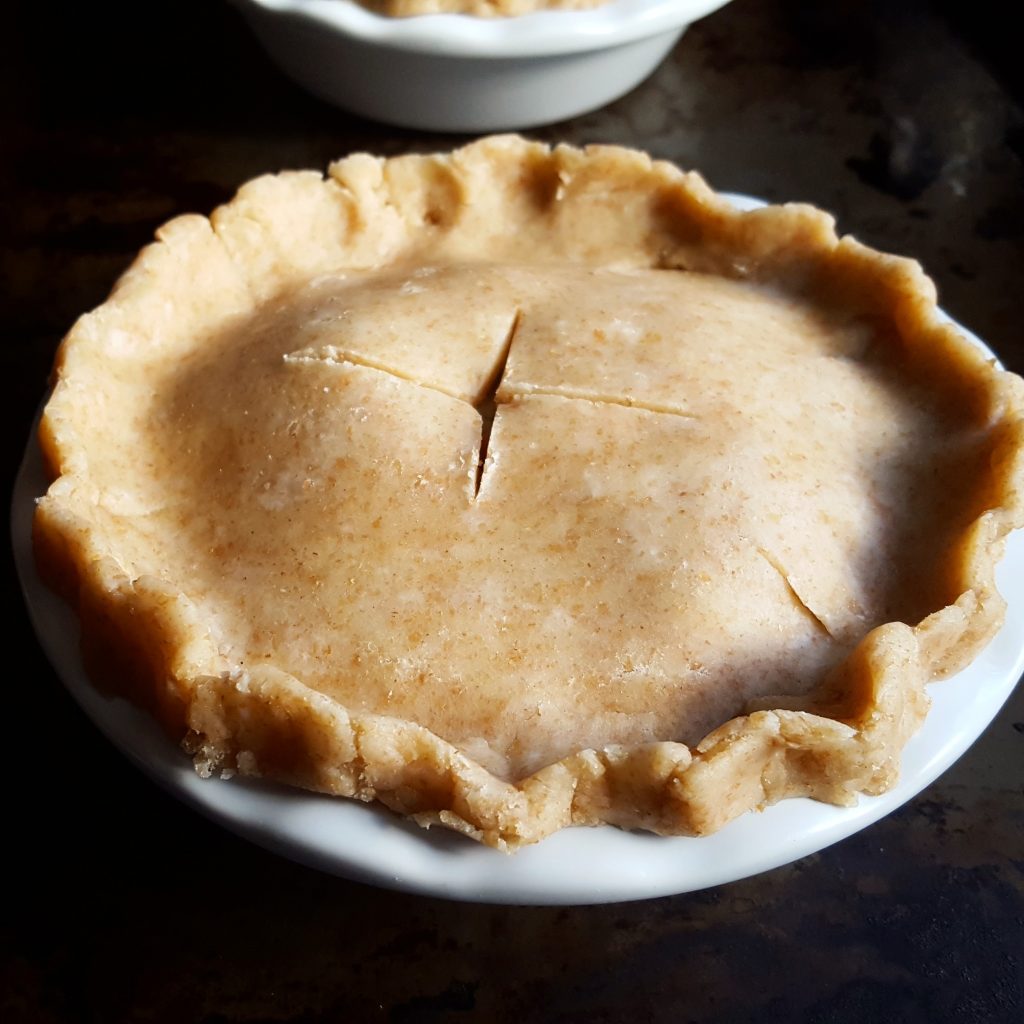Though pie crust isn’t something that I make or eat often, it’s definitely worth having a high-quality crust in your cooking arsenal.
Whether it’s a sweet pie for the holidays, a quiche for a potluck brunch, or a savory pot pie during fall & winter, it can fancy up a meal with little fuss.
And I’m all about relying on recipes that can streamline my time in the kitchen while yielding predictable & tasty results.
This recipe is a slightly tweaked version from Sally’s Baking Addiction. I cut back a bit on the butter & used a mix of spelt & all-purpose flour. By now, you’ve probably noticed that I’m a big fan of spelt flour, because I enjoy it’s nutty flavor & the extra fiber it adds to dishes.
While pie crust can be calorically dense, it’s not something that you need to obsess about if you enjoy it in moderation. And if you’re engaging in some longer outdoor activities, the extra carbs will be put to good use replenishing the glycogen your body needs to recover.
Rich & buttery pie crust
 • 1 1/2 cups whole spelt flour
• 1 1/2 cups whole spelt flour
• 1 cup all-purpose flour (you could easily use 2 1/2 cups all-purpose flour & omit the spelt flour if you preferred, or vice versa)
• 4 tablespoons salted butter
• 3/4 cup shortening (I use non-hydrogenated)
• 1 teaspoon salt (1 1/4 teaspoons if you use unsalted butter)
• 1/2 cup ice-cold water (you may not need all of it per directions below)
In a medium or large mixing bowl, combine the flour & salt and mix well.
Add the butter & shortening, and cut them in with a pastry cutter, two knives, or a fork until the mixture resembles coarse meal.
Next, add the cold water 1 tablespoon at a time & mix with a rubber spatula after each addition.
Continue adding the water, one tablespoon at a time, until the dough forms large clumps. At this point, stop adding water even if you haven’t added the full 1/2 cup. You only want to add as much as absolutely necessary, but no more.
Turn out dough onto a floured surface & form into a ball. The dough shouldn’t be sticky at this point, and if it is, it will need a bit more flour.
Cut the dough in half, flatten each half into a disc & wrap in plastic wrap.
Refrigerate at least 2 hours or up to 5 days. You can also freeze the dough at this point if you’re making it ahead. But if you freeze it, remember to take it out to thaw overnight before you need it.
Once you’re ready to make the crust, take the chilled crust out of the fridge & place on a lightly floured or nonstick surface to roll it out. I admit that I let it sit out a bit so it softens, though technically you’re not “supposed” to do that. But I find rolling super chilled dough difficult, especially with spelt flour (which crumbles more easily), so having it be chilled but not cold is my preference.
Using gentle pressure from the center of the dough, roll it in all directions to make a disc. Then transfer to your pie plate & use as directed in your pie recipe.
Need some variety?
While I like this classic version best, you can also doctor if you want some additional flavor by using 1/4 to 1/2 teaspoon of your favorite extract, vanilla bean, citrus zests, poppy seeds, dried or finely chopped herbs, pesto, a clove of roasted garlic and/or hard cheeses like asiago, cheddar or parmesan.
Just be careful not to go wild, because you want to complement the flavor in the filling rather than overpower it.